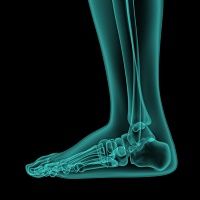Article
Heel Spurs: A New Approach to Treatment
Author(s):
A recent study compared outcomes following surgery to release of the first branch of the lateral plantar nerve with or without calcaneal drilling for resistant plantar fasciitis.

A full 10% of the population experiences heel pain during their lives. Plantar fasciitis is the most common cause of heel pain, and most patients who develop it have pain for about 10 months. Usually, their condition responds to conservative measures. Plantar fasciitis that persists, however, often requires surgery. Surgery to perform proximal release of the gastrocnemius is the most common approach. Some patients have a more complicated picture, with the posterior tibial nerve dividing at the most distal region of the tarsal tunnel, entrapping the first branch of the lateral plantar nerve.
The December 2015 issue of the Journal of Orthopaedic Surgery contains a study in which researchers compared outcomes following surgery to release of the first branch of the lateral plantar nerve with or without calcaneal drilling for resistant plantar fasciitis.
This small study randomized 33 patients, mean age 45, who had resistant plantar fasciitis to undergo release of the first branch of the lateral plantar nerve with (group 1, n=18) or without (group 2, n=15) calcaneal drilling.
The researchers followed patients for approximately 27 months.
Patients whose procedures included calcaneal drilling had significantly better outcomes than those whose procedures did not include calcaneal drilling.
Patients whose procedures included calcaneal drilling were more likely to experiences complications. Heel numbness, foot edema, and superficial wound infection were reported. Due to the small study size and number of patients experiencing complications, it is not clear if this is a significant finding.
The researchers recommend ultrasonography to differentiate the fascia from the superficial fat pad and the underlying calcaneus. It can also detect hypoechogenicity, biconvexity, partial rupture, perifascial edema, and intratendinous calcification.
They conclude that their procedure, which is simpler than endoscopic release of the plantar fascia, achieves better outcomes than release without drilling in patients with resistant plantar fasciitis.





